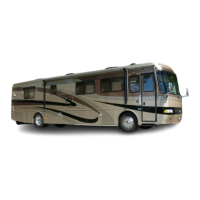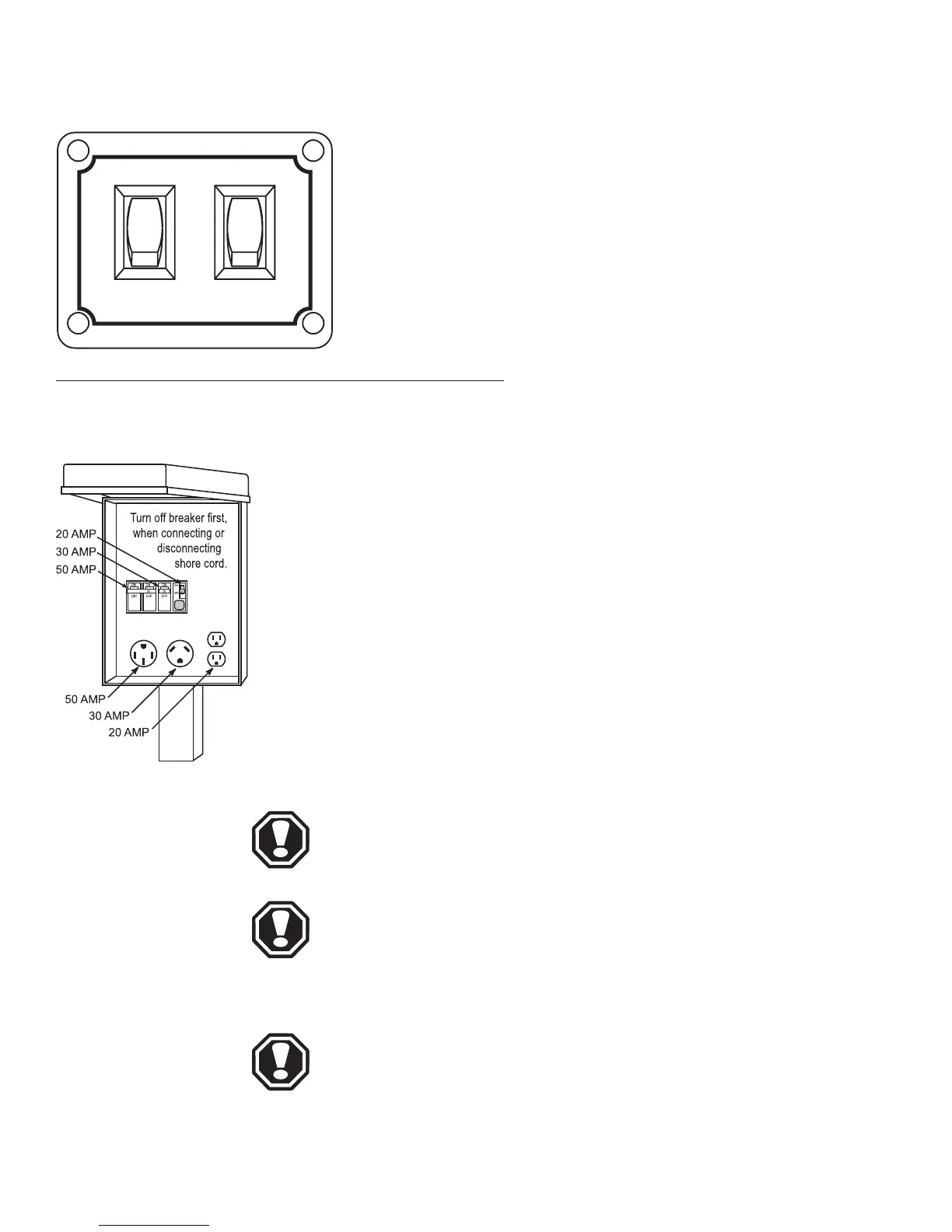Electrical Systems - House
---------------------------------------------------------------------------------------------------------------------------------------------------------------------------------------------------------------------------------------------------------------------------------------------------------------------
WINDSOR
8•192
The battery cut-off switch is located inside and next to the entry
door. This switch controls the 12 Volt DC power to the domestic
fuse panels. When the switch is ON power is supplied to all interior
DC lighting and DC operated appliances. Although, some appli-
ances will require both DC and AC power to operate, such as the
roof air conditioner. This switch is helpful when dry camping and
can be used to conserve house battery power. Refrigerator and
inverter operation are unaffected by the operation of this switch.
When turned off, this switch will not stop all parasitic loads and
therefore, is not a substitute for the main battery disconnect switch.
If 50 amp shore power service is available, all that is necessary is to
connect the motorhome to the 50 amp shore power service using the supplied
shore power cord. The cord is located in the compartment on the roadside of
the motorhome. Before hooking up to the park’s shore power, verify that prop-
er voltage and ground protection are present at the outlets. After hooking up to
shore power, verify proper voltage and ground protection are present in the
motorhome itself. Inexpensive testers are available for this purpose. Always
turn off the power circuit breaker previous to connecting or disconnecting the
shore power cord. This will avoid the risk of electrical shock and momentary
contact flash. After the unit is connected to shore power, wait approximately
one minute for the inverter to “stabilize” charging of the batteries before start-
ing air conditioners or other large AC loads. In many instances 50 amp shore
service is not available. Proper electrical adapters must be used to connect the
supplied shore power cord to the shore service available. When connecting to
anything other than 50 amp shore service, use caution not to overload the sup-
plied shore service breaker. Appliances and outlet loads will have to be operat-
ed in sequence, rather than all at the same time.
CAUTION: Avoid the risk of electrical shock or component
damage by disconnecting from shore power during electrical
storm activity. Use the inverter or start the generator if AC
power is needed.
CAUTION: If shore power service is limited to 15 or 20 amps,
use of light duty extension cords and electrical adapters will
create a voltage loss through the cord and at each electrical
connection. Line voltage loss and the resistance at each electri-
cal connection can be a hazardous combination. Damage to
sensitive electronic equipment may result!
WARNING: Keep fingers away from metal contacts of shore
plug end. Avoid standing water. Serious electrical shock and
personal injury can occur. To avoid the risk of an electrical
shock turn the circuit breaker off for the shore power outlet
before making a shore power connection.
BATTERY CUT-OFF SWITCH

